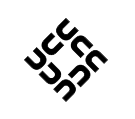|
Size: 1280
Comment: oops.
|
Size: 2207
Comment: Update for '07
|
| Deletions are marked like this. | Additions are marked like this. |
| Line 1: | Line 1: |
| Affectionately known as DMSD, this unit was taken in 2006 by Dr. Gia Parish and Dr. Farid Boussaid. The first half by Gia, covering semiconductor modelling and fabrication techniques, is interesting if you swing that way but is otherwise pretty standard stuff. Labs are in MEDICI and are marked verbally in the lab - it's easy marks if you have some idea of what's going on. The MEDICI reference manual is in /usr/local/appl/ somewhere and worth paying attention to. Much of the fabrication stuff is also covered in MEMS (a 2nd sem special topics unit). | ## page was renamed from DigitalMicroSystemDesignENGT4302 Affectionately known as DMSD, this unit was taken in 2006/07 by Dr. GiaParish and Dr. FaridBoussaid. |
| Line 3: | Line 4: |
| The other half by Farid is more hands-on. Covering VLSI design, you actually get to design a semiconductor in (virtual) silicon using $500k-software and learn about all of the stuff that matters by actually doing it and testing it. A lot of his slides were duplicated from [:CircuitsAndElectronicSystemsENGT3301:CES329], so if you groked it then, then the learning curve isn't particuarly steep. | The first half, taught by Gia, covers MOS capacitors, the MOSFET, semiconductor modelling and fabrication technology, is interesting if you swing that way but is otherwise pretty standard stuff. This is the harder part of the unit. Labs are in ["Sentaurus"] (the successor to ["MEDICI"]) and are marked verbally in the lab - it's easy marks if you have some idea of what's going on. The MEDICI reference manual is in /usr/local/appl/ somewhere and worth paying attention to. Much of the fabrication stuff is also covered in MEMS (a 2nd sem special topics unit). There is an assignment that uses ["Sentaurus"] to simulate several MOSFETs, an extension of what happened in the labs, and write a report on future MOS technology. |
| Line 5: | Line 6: |
| The 2006 exam was quite reasonable and along the same lines as the mid-semester tests. If you vaguely enjoyed [:CircuitsAndElectronicSystemsENGT3301:CES329], DMSD is a good choice. | The other half, by Farid, is more hands-on. Covering VLSI design, you actually get to design a semiconductor in (virtual) silicon using ["Cadence"] (allegedly $500k-software) and learn about all of the stuff that matters by actually doing it and testing it. A lot of his slides were duplicated from [:CircuitsAndElectronicSystemsENGT3301:CES329], so if you groked it then, then the learning curve isn't particuarly steep. Topics covered include gate design in static-CMOS, dynamic logic, pass-transistor logic, transmission-gate logic, logical effort, fan out, power and layout of transistors. The labs get you familiar with ["Cadence"] by designing a static-CMOS inverter. The assignment requires you to design a 4-bit ALU capable of implementing add, subtract, bitwise-AND and bitwise-OR. DavydMadeley and team allegedly created the first CarryLookAheadAdder ever seen in this unit. |
| Line 7: | Line 8: |
| [http://student.ee.uwa.edu.au/units/engt4302 Unit website] | The 2006 exam was quite reasonable and along the same lines as the mid-semester tests. The 2007 exam was also reasonable. If you vaguely enjoyed [:CircuitsAndElectronicSystemsELEC3301:CES329] and did ok at [:PhysicalElectronicsELEC2304:Physical Electronics 2], DMSD is a good choice. [http://student.ee.uwa.edu.au/units/elec4302 Unit website] |
Affectionately known as DMSD, this unit was taken in 2006/07 by Dr. GiaParish and Dr. FaridBoussaid.
The first half, taught by Gia, covers MOS capacitors, the MOSFET, semiconductor modelling and fabrication technology, is interesting if you swing that way but is otherwise pretty standard stuff. This is the harder part of the unit. Labs are in ["Sentaurus"] (the successor to ["MEDICI"]) and are marked verbally in the lab - it's easy marks if you have some idea of what's going on. The MEDICI reference manual is in /usr/local/appl/ somewhere and worth paying attention to. Much of the fabrication stuff is also covered in MEMS (a 2nd sem special topics unit). There is an assignment that uses ["Sentaurus"] to simulate several MOSFETs, an extension of what happened in the labs, and write a report on future MOS technology.
The other half, by Farid, is more hands-on. Covering VLSI design, you actually get to design a semiconductor in (virtual) silicon using ["Cadence"] (allegedly $500k-software) and learn about all of the stuff that matters by actually doing it and testing it. A lot of his slides were duplicated from [:CircuitsAndElectronicSystemsENGT3301:CES329], so if you groked it then, then the learning curve isn't particuarly steep. Topics covered include gate design in static-CMOS, dynamic logic, pass-transistor logic, transmission-gate logic, logical effort, fan out, power and layout of transistors. The labs get you familiar with ["Cadence"] by designing a static-CMOS inverter. The assignment requires you to design a 4-bit ALU capable of implementing add, subtract, bitwise-AND and bitwise-OR. DavydMadeley and team allegedly created the first CarryLookAheadAdder ever seen in this unit.
The 2006 exam was quite reasonable and along the same lines as the mid-semester tests. The 2007 exam was also reasonable. If you vaguely enjoyed [:CircuitsAndElectronicSystemsELEC3301:CES329] and did ok at [:PhysicalElectronicsELEC2304:Physical Electronics 2], DMSD is a good choice.
[http://student.ee.uwa.edu.au/units/elec4302 Unit website]
[http://units.uwa.edu.au/elec4302 Handbook entry]



